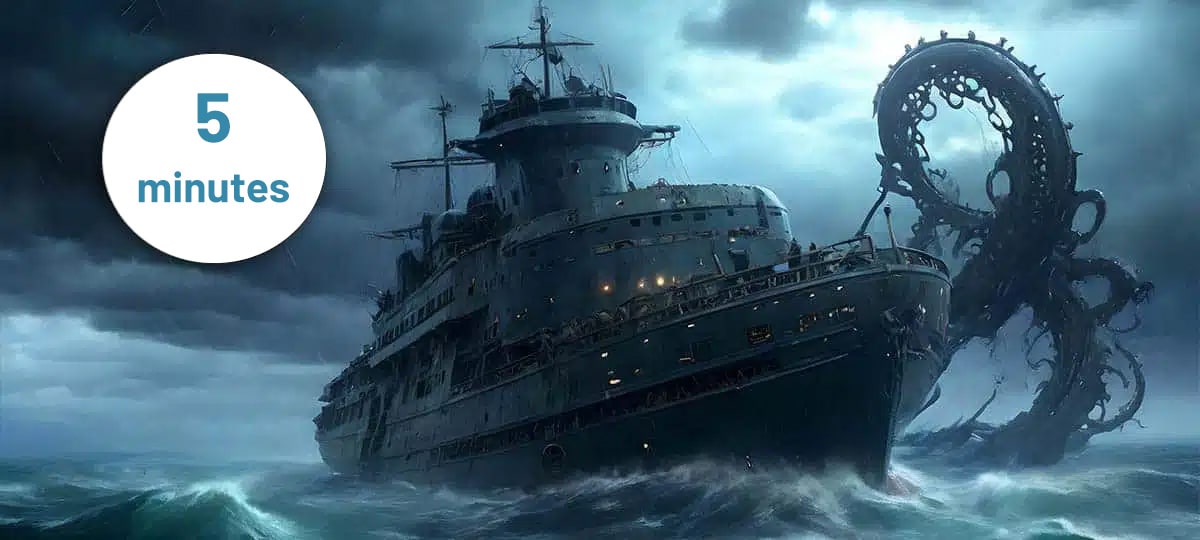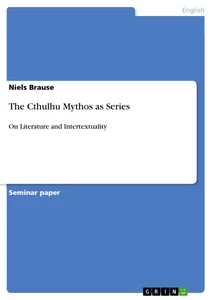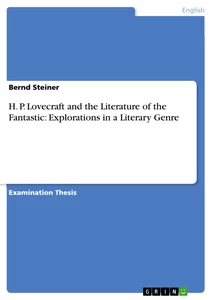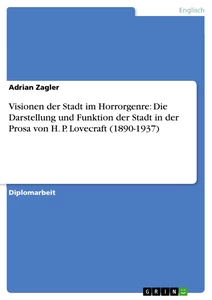<b>[openpublishing template="presentation" get_by_id="70465"] : </b></br>https://api.openpublishing.com/resource/v2/document.70465[:basic,non_academic.realm_genres.*]&cache=yes
<b>[openpublishing template="presentation" get_by_id="168307"] : </b></br>https://api.openpublishing.com/resource/v2/document.168307[:basic,non_academic.realm_genres.*]&cache=yes
What to expect
First things first:
- This is the only story by the author in which one of the Great Old Ones actually appears
- Lovecraft found the story rather mediocre
- The Cthulhu Mythos lived on after the author’s death
For more information about the author and his life, feel free to check out our article on “The Nameless City”, which serves as an introduction to Lovecraft’s works.
Summary of the short story
The story is divided into three parts. In this summary, the narrator will not be gendered, as neither the name nor the gender is known. However, it can be assumed that the narrator is male.
Part 1: “The Horror in Clay”
The narrator’s grand-uncle, George Gammell Angell, a professor of Semitic languages, has died suddenly under mysterious circumstances. As the professor’s sole heir, the narrator discovers something strange among his personal effects: a clay relief covered in terrifying, otherworldly images, and a manuscript titled “The Cult of Cthulhu”. The relief depicts unknown hieroglyphs and a grotesque humanoid figure with tentacles on its head and small wings, which the narrator describes as repulsive and hideous. The relief was created by the artist Henry Anthony Wilcox, inspired by visions in his dreams of green slime, massive cyclopean cities, monoliths, and the strange phrases “Cthulhu fhtagn” and “R’lyeh”. For weeks, Wilcox was plagued by his visions, and Angell’s notes describe his episodes of madness. The narrator, intrigued, digs deeper. Angell had documented similar cases worldwide: nightmares, artists producing similar drawings, and people experiencing intense panic. Many accounts referenced a giant figure, and the narrator suspects it may be the same horrific creature depicted in the relief.
Part 2: “The Tale of Inspector Legrasse”
The notes tell how, seventeen years earlier, Inspector Legrasse approached an archaeological society seeking help in identifying a small figure he had confiscated from a brutal, unfamiliar cult. The statue resembled the figure on the relief, but neither seemed connected to any known civilization. The idol was made from an unknown greenish-black stone with gold specks. The archaeologists could not help him.
One of the archaeologists, however, recognized the cult from an encounter in Greenland. The Inspector’s encounter with the cult in New Orleans revealed that this group was part of a worldwide secret cult worshipping Cthulhu, a god of the Great Old Ones, who ruled the Earth long before humanity. Cthulhu is said to sleep and dream in a sunken city, waiting to be awakened by priests. The cultists chant: “Ph’nglui mglw’nafh Cthulhu R’lyeh wgah’nagl fhtagn,” which translates to, “In his house at R’lyeh, dead Cthulhu waits dreaming.” The same chant was also recorded in Greenland. The cult’s practices include orgies, human sacrifices, and hysterical dancing.
Legrasse learned more about the cult and the Great Old Ones from an elderly man named Castro, who claimed that the Great Old Ones once ruled the Earth, living in massive cyclopean cities now lying beneath the Pacific Ocean. The Great Old Ones are dead but waiting for the stars to align to rise again. Castro added that the Great Old Ones lack physical form, cannot truly die, and communicate telepathically. They can manipulate the dreams of susceptible humans. Castro explains that the Great Old Ones are waiting for humanity to become like them—without moral constraints, free, wild, and ecstatic. Only then will they rise. Castro also quotes a line from the Necronomicon by poet Abdul Alhazred: “That is not dead which can eternal lie, and with strange aeons, even death may die,” saying it alludes to the Great Old Ones. The narrator pieces together these fragments and visits Wilcox, the artist who created the relief, to verify his story. He finds Wilcox’s account credible, which fuels his obsession with the cult even more.
Part 3: “The Madness from the Sea”
The narrator comes across a newspaper article describing a brutal, mysterious incident at sea, clearly linked to the Cthulhu cult. He notices a series of events—storms, dreams, earthquakes, madness—all occurring simultaneously but suddenly ceasing afterward. Seeking answers, he tracks down the only survivor, a man named Johansen, in Oslo, Norway. However, when he arrives, he learns Johansen recently died under strange circumstances. Johansen’s diary, however, survived and was passed on to the narrator. The diary describes the events at sea, including a massive stone pillar surrounded by ancient, greenish walls with nonsensical geometry. While exploring, the crew encountered a doorway, behind which lay impenetrable darkness and a foul stench, from which something enormous began to emerge. The slimy, spongy creature killed three sailors; only two made it back to the boat, with Johansen as the sole survivor.
After reading the journal, the narrator pieces together the puzzle, concluding that it was Cthulhu who rose from the pillar in the sea. This event, when R’lyeh emerged and Cthulhu awoke, seems to have caused the strange events worldwide: dreams, earthquakes, and more. The narrator suspects that these phenomena ceased as Cthulhu retreated back into the city, though the reasons remain unclear. The narrator fears for his own life, believing he knows too much, and dreads that others might read his notes. He hopes no one will ever find the records he has left behind.
Background and fun facts
- Lovecraft wrote the story in 1926, though some aspects likely originated in a dream he had in 1920. Dreams play a significant role in the story since Cthulhu is said to dream in his city, R’lyeh, and able to manipulate dreams.
- Lovecraft’s racist worldview is especially evident in this story, portraying non-white, non-Western people as inferior or morally corrupt.
- The Cthulhu Mythos grew from “The Call of Cthulhu” and received its name only after Lovecraft’s death. The Mythos continued to expand, with new gods added and references appearing in popular culture, films, and tabletop games.
- The story reworks elements of Lovecraft’s earlier short story, “Dagon”, from 1917.
- The name Cthulhu is notoriously difficult to pronounce. Lovecraft intended it to be unpronounceable by human tongues, as it originated from beings without human vocal cords. Humans can only approximate it. According to Lovecraft, the name might sound something like “Khlûl’-hloo,” with the first syllable being pronounced in a very guttural and heavy manner. The û should sound like the u in “put.”
Unsere Buchempfehlungen zum Thema:
Sources:
- German Lovecraft Society: H. P. Lovecraft
- H.P. Lovecraft Wiki: The Call of Cthulhu
- “The Call of Cthulhu and Other Weird Stories”. H.P. Lovecraft, Ed. S.T. Joshi.
- “The Call of Cthulhu”. H.P. Lovecraft. 1926.
Do you like our magazine?
Then sign up for our newsletter now!






